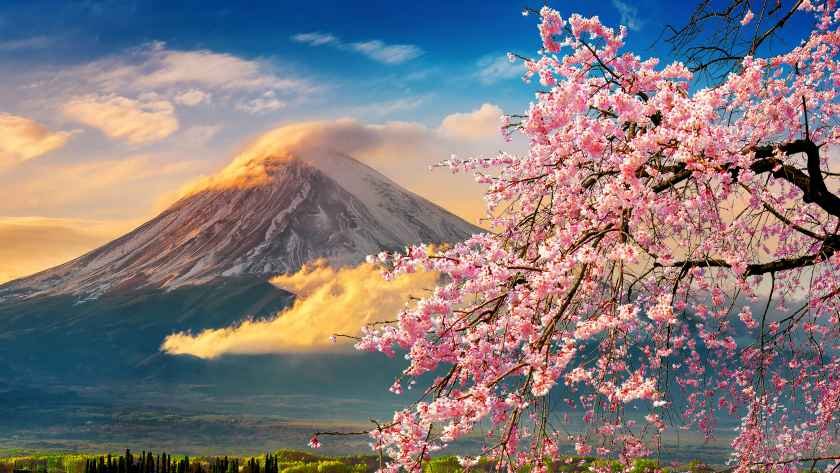Travel Trends
Spain Witnesses a Shift in Tourism Trends as Lanzarote Sees a Surge in British Visitors and a Notable Decline in German Arrivals, Despite Ongoing Protests

Saturday, July 26, 2025
Spain’s Lanzarote is experiencing a notable shift in its tourism dynamics, as the island sees a significant rise in British visitors while German arrivals decline. Between January and May 2025, British tourism surged by nearly 40,000, balancing the drop in German tourist numbers, which fell by almost 30,000. This shift is attributed to several factors, including the ongoing impact of higher air travel taxes in Germany and the overall appeal of Lanzarote to British holidaymakers seeking sun and a vibrant cultural experience. Despite the decline in German visitors, Lanzarote’s overall tourism numbers continue to rise, fueled by increasing interest from other international markets.
Lanzarote Faces Decline in German Tourist Numbers, But Surge in British Visitors Propels Overall Growth
Lanzarote, one of the Canary Islands’ most popular destinations, is seeing a decline in German tourists, with the number of visitors dropping by nearly 30,000 from January to May 2025. German holidaymakers accounted for approximately 146,079 arrivals, compared to 174,976 during the same period in 2024. This marks a notable downturn, but despite the fall in German tourism, Lanzarote is experiencing a broader increase in international arrivals, particularly from the UK.
Spain remains a dominant force in global tourism, attracting millions of visitors annually. Within Spain, Madrid, Barcelona, and Seville consistently rank among the most visited cities, while the Balearic Islands, Canary Islands, Valencia, and Granada also draw significant numbers of travelers. However, Lanzarote’s numbers reflect a shift in the tourist demographic, especially with a rise in British visitors.
Between January and May 2025, UK arrivals surged by almost 40,000, increasing from 691,902 to 738,387. This surge in British tourists helped counterbalance the decline from German visitors, and tourism experts predict that Lanzarote’s overall tourist numbers will align with those of the previous summer, thanks in large part to the growth in British arrivals. Despite ongoing protests across the Canary Islands, which have caused some unrest, the influx of British tourists has proven resilient, as they continue to favor Lanzarote for its sun, beaches, and vibrant culture.
In total, Lanzarote saw 1.4 million international tourists in the first five months of 2025, marking an increase of 46,188 compared to the same period in 2024. While German arrivals dropped, the overall number of visitors to Lanzarote still grew, thanks to the strong performance from other European countries. The Netherlands, Italy, Ireland, France, and Belgium all contributed to the surge, demonstrating that the decline in German visitors has not caused significant harm to the island’s tourism industry.
The drop in German tourism has raised questions about the impact of recent changes in European aviation policies. Specifically, the German government’s decision to increase air ticket taxes in May 2024 has likely played a role in reducing the number of German holidaymakers heading to Lanzarote. The new tax hike, which raised the cost of short-distance flights by 25%, from £10.82 to £13.46 per ticket, has caused concerns among industry professionals. Nicolás Villalobos, General Director of the Cordial Group, referred to the increased taxation as “very bad news” for both the tourism sector and travelers alike. This policy change may have deterred some German visitors, who are now facing higher costs for flying to popular destinations like Lanzarote.
While the tax hike may have had some influence, Lanzarote’s tourism officials remain optimistic. The Canary Islands Tourism Statistics Institute (ISTAC) projects that despite the drop in German arrivals, the number of overall visitors will remain steady, thanks to the increase in British visitors and the diversity of international tourism that continues to support the region’s economy.
However, the increase in tourism has also raised concerns among local residents, particularly regarding the effects of mass tourism on the island’s infrastructure and social fabric. Locals have expressed worries about rising living costs, overcrowding, and the potential loss of the island’s cultural identity. In recent years, the influx of tourists has strained public services and housing, driving up prices and making it more difficult for residents to secure affordable accommodation.
In the first quarter of 2025, the Canary Islands as a whole saw a 2.1% increase in international tourists, reaching a total of 4.36 million arrivals, compared to the same period the previous year. The uptick in visitors is a sign that the Canary Islands, including Lanzarote, continue to be a sought-after destination. Nonetheless, there are ongoing challenges that need to be addressed, especially as the islands strive to balance economic growth with the preservation of their local culture and environment.
Lanzarote is seeing a rise in British visitors, offsetting a decline in German arrivals due to factors like higher air travel taxes in Germany. Despite the dip in German tourism, overall visitor numbers remain strong, with other international markets, including the UK, driving growth.
For now, Lanzarote’s tourism sector is benefiting from the surge in UK visitors, which has helped to counterbalance the decline in German arrivals. The island’s tourism industry is hopeful that it will continue to attract a diverse range of international tourists in the coming months, despite the challenges posed by rising taxes and local concerns over mass tourism. With its stunning landscapes, warm climate, and rich culture, Lanzarote remains a top destination for travelers seeking a mix of relaxation, adventure, and natural beauty.
Travel Trends
Terminal transformation at Kolkata Airport

Netaji Subhas Chandra Bose International (NSCBI) Airport in Kolkata is undergoing a major expansion. The Airports Authority of India plans to demolish the old domestic terminal and replace it with a new U-shaped international terminal. This is in response to rising passenger numbers and the need for increased capacity. The current integrated terminal already handles 26 million passengers annually and is expected to reach its full limit by 2025–26.
Once the new international terminal is completed, the current terminal will be used exclusively for domestic flights. Its capacity will be increased to accommodate 34 million domestic passengers each year. The new international terminal will initially add capacity for 2 million more international travellers, with the possibility of phased expansion in the future. In the meantime, 5,600 square meters are being added to the current terminal to temporarily increase its capacity from 26 to 28 million passengers annually.
The old domestic terminal, constructed in 1995, has been largely unused since 2013 except during emergencies. It served as a COVID-19 quarantine facility and was used for Haj operations. Full demolition of the structure is expected by early 2026, clearing space for the new terminal construction and modern upgrades.
Once the expansion is complete, NSCBI Airport will be able to handle 45 million passengers each year—36 million domestic and 9 million international. The project is part of a broader effort to modernise the airport, improve the travel experience, and support Kolkata’s growing importance as a regional and international hub.
Destinations & Things To Do
This Hidden Beach in India Glows at Night-But Only in One Secret Season

The coastline of India, while vast and diverse, holds many untold natural wonders. While most beaches beckon with golden sands and crashing waves under the sun, one particular stretch in Karnataka transforms into an otherworldly spectacle after dusk. This isn’t just about a beautiful sunset; it’s about a rare, mesmerizing phenomenon that turns the ocean into a canvas of shimmering, neon-blue light. Welcome to Mattu Beach, a hidden gem that glows at night, but only if you know its secret season.
Chasing Elusive Glows
Many travelers dream of witnessing bioluminescent beaches, those magical shores where the waves sparkle with an ethereal light. However, such phenomena are often unpredictable, fleeting, and require specific conditions. This can lead to disappointment for those who journey across continents only to find the “light show” isn’t happening. The challenge lies in knowing precisely when and where to find this natural marvel, especially in a region as vast as India.
The Science of the Sparkle: Dinoflagellates in Bloom
The dazzling blue glow at Mattu Beach isn’t magic; it’s science. This natural light emission, known as bioluminescence, is primarily caused by a dense bloom of microscopic marine organisms called dinoflagellates, specifically Noctiluca scintillans, often referred to as “sea sparkle.” These tiny organisms produce light through a biochemical reaction when agitated—by a breaking wave, a disturbance from a boat, or even the gentle movement of sand. The energy from this reaction is released as visible light, creating the mesmerizing blue-green shimmer that transforms the shoreline into a living light show. This phenomenon thrives under particular conditions, including specific water temperatures and nutrient levels, which contribute to the dinoflagellates’ proliferation.
Unlocking Mattu’s Secret Season
While bioluminescence can occur sporadically in various coastal areas, Mattu Beach near Udupi, Karnataka, has gained recognition for its relatively consistent displays, especially during a particular “secret” season. Based on recent observations and local insights, the best time to witness the glowing waters at Mattu Beach is typically between June and September, during the monsoon and post-monsoon months. This period often brings the ideal combination of nutrient-rich waters and specific temperatures that encourage the dense bloom of bioluminescent plankton. The glow is most visible on moonless nights, when the darkness enhances the shimmering light produced by these microscopic organisms.
My own fascination with discovering such natural wonders led me to deep dive into this phenomenon. A friend, a marine biology enthusiast who frequents the Karnataka coast, shared tales of these luminous nights. While predicting natural events is inherently tricky, the consistent reports during the monsoon period from locals and environmental groups offered a crucial tactical insight. It’s a testament to nature’s timing – a period often associated with heavy rains reveals this delicate, stunning display.
To maximize your chances, plan your visit during the new moon phase within this window, ensuring the darkest possible skies. Mattu Beach itself is a tranquil, less-crowded destination, making it ideal for experiencing this delicate spectacle away from urban light pollution. The approach road can be dark, so arrive prepared, and remember that patience is key.
A Journey into the Unseen
Witnessing Mattu Beach glow under a dark sky is more than just a visual treat; it’s a profound experience that connects you with the hidden wonders of our planet. It’s a reminder that even in seemingly ordinary places, extraordinary beauty can emerge when conditions align. This tactical insight into Mattu’s secret season offers travelers a genuine opportunity to experience one of India’s most breathtaking, yet elusive, natural phenomena. It’s about being in the right place at the right time to see the ocean quite literally come alive with light.
Before You Go:
If you’re planning to catch the beach when it glows, here’s a quiet travel hack: some travelers now use cheQin.ai where instead of booking instantly, you post what you need and nearby hotels bargain in real time to offer their best rates. No hunting through listings, just a little back-and-forth magic, kind of like the beach itself.
Travel Trends
Now, domestic travel grows among young Japanese as Overseas Trips Become Costlier and Less Accessible

Saturday, July 26, 2025
Apparently, though, not so among their youngest citizens, with a new study showing that only 17.5% of young Japanese adults hold a passport, in stark contrast to worldwide travel statistics. This phenomenon is part of a broader trend among younger generations in Japan that prefer to travel domestically rather than internationally, a combination of a weakened yen, increased flight costs and security concerns overseas have all caused the growing trend. This new trend is having an effect on Japan’s outbound travel, but at the same time bringing changes to the travel industry in Japan, more and more people are now deciding to look around Japan instead of going abroad.
The study, which was done using the new travel app, compared passport ownership in Japan in other major developed economies and showed that countries including South Korea, the United States and Taiwan have far higher percentages of passport holders. This disparity highlights young Japanese people’s reluctance to travel abroad at a time when travel abroad has a tradition in Japan.
Overseas leisure travel affected by weak yen and increasing flight charges
Subtle messages are being spread by young Japanese travelers that the era of traveling abroad among Japanese travelers is over and that they won’t be traveling abroad. One of the reasons for that is the weak yen. With the yen tumbling further relative to major currencies, travel abroad has just got a lot more expensive for the Japanese people. The cost of travel overseas already very expensive with airfare, accommodations, and other expenses has only gotten more expensive with the fall of the yen. Yet for a lot of younger Japanese, it means less incentive to travel the world when there are cheap alternatives at home.
Increasing flight prices have made things worse. The airline industry has been challenged by increasing fuel prices and other financial headwinds, and international ticket prices have gone higher. For young people, many of whom spend gap years or time abroad on a budget, flight costs can be the most significant barrier. Instead, domestic planes and trains in Japan, even with the effective but dated Shinkansen (bullet train) system, provide a more economical and accessible alternative.
Japan’s weakening yen has sapped purchasing power and made travel costlier for its nationals, and this has prompted more Japanese to simply travel at home, where costs are more manageable and predictable. Consequently, there are many hot domestic spots, such as Okinawa, Hokkaido, and Kyoto, thanks to this travel style transition.
Safety Concerns and Implications for International Travel
Besides economy, also safety concerns overseas are hindering the travel of young Japanese. With global happenings such as political unrest, natural disasters, and lingering worries of COVID-19, there are now certain international destinations that might not seem as appealing for trekkers. Passengers may be discouraged by media reporting of instability or public health risks, particularly by the younger generation that are more risk adverse on the global safety situation.
These worries are made worse by the lack of clarity about travel bans and health policies in many nations. So even as international borders have begun to reopen, the shifting nature of travel regulations, the threat of new restrictions and differing health conditions can make travel overseas a seemingly unpredictable and risky proposition.
Moreover, a relatively high sense of safety and public health here in Japan, even in the age of COVID-19, can also make travelling domestically seem a more safe and hassle-free option. Japan’s stable infrastructure and rigorous safety policies make it possible for locals to take domestic trips without experiencing the uncertainty and hassle of international travel.
Domestic Tourism Development and Regional Economic Revival
Local tourism sees significant boom on the back of young Japanese turning their eyes to domestic travel. Japan’s famous for its rich cultural history, dramatic scenery and exciting urban centers, and now its culture and landscape are attracting the Japanese themselves in record numbers. Even places like Hokkaido’s snow capped mountains, Kyoto’s ancient temples and Okinawa’s tropical beaches are being more widely visited by Japanese tourists.
Growth in domestic tourism is helping to spread the wealth of tourism income around Japan more equally. Historically, international visitors to Japan have been largely concentrated in big cities such as Tokyo and Osaka. But as more Japanese nationals begin travel within the country, regions once left in the shadows have begun experiencing a tourism boom. The result has been rural economic growth, as more people visit small towns, national parks and historic sites that often are outside the reach of international travelers.
Or, for that matter, domestic tourism has sparked new local travel trends. For example, numerous young Japanese voyagers are looking to become immersed in culture experiences, namely, check in at a ryokan, participating in a local gastronomic tour, hiking in rural Japan. This trend promotes the local economy by stimulating spending at small businesses, such as restaurants, local shops and regional tour companies.
The government also moved to spur domestic tourism, with campaigns such as the Go To Travel initiative, offering discounts to Japanese who travel within the country. These initiatives have been crucial in keeping the tourism at bay during the challenging time of economic uncertainty while people have been motivated to get to know ideas, regions and resources in their own backyards.
What Japan’s New Tourism Agency Should Do
Although people are anxious or financially constrained toward travelling overseas, the domestic tourist market is full of potential for Japan. The nation has an impressive transportation network (best known for the Shinkansen rail network and cheap flights) so citizens can experience a new area without traveling abroad. While attitudes have been shaped by the pandemic, continued economic recovery and increased safety and security could lead young Japanese to venture overseas once more.
But in the meantime, domestic tourism continues to dominate Japan’s tourism landscape. As young people travel around the country to see its fascinating natural beauty and cultural diversity, the tourism industry is going to keep getting bigger, no matter what problems crop up with international travel. Given the rising interest in local destinations, Japan’s tourism industry is poised to make a speedy recovery and do very well in the years to come.
With young Japanese increasingly favoring the pleasures of domestic travel, the tourism in Japan for the future will most likely be about how to fashion memorable domestic travel experiences capable of competing with the attractions of foreign lands. It can do so by devoting itself to sustainability and accessibility and, in the process, make sure that its tourism market stays resilient, varied and relevant to a changing resident population.
(Source: Japan Tourism.)
Tags: apan, domestic tourism Japan, flight costs Japan, Hokkaido, Japan outbound travel decline, Japan passport ownership, Japan tourism industry 2025, Japanese domestic travel, Japanese tourism trends, Japanese youth travel preferences, Kyoto, okinawa, Osaka, Tokyo, weak yen impact on travel, young Japanese travel habits
-

 Brand Stories5 days ago
Brand Stories5 days agoBloom Hotels: A Modern Vision of Hospitality Redefining Travel
-

 Brand Stories15 hours ago
Brand Stories15 hours agoCheQin.ai sets a new standard for hotel booking with its AI capabilities: empowering travellers to bargain, choose the best, and book with clarity.
-

 Destinations & Things To Do6 days ago
Destinations & Things To Do6 days agoUntouched Destinations: Stunning Hidden Gems You Must Visit
-

 AI in Travel6 days ago
AI in Travel6 days agoAI Travel Revolution: Must-Have Guide to the Best Experience
-

 Brand Stories3 weeks ago
Brand Stories3 weeks agoVoice AI Startup ElevenLabs Plans to Add Hubs Around the World
-

 Brand Stories2 weeks ago
Brand Stories2 weeks agoHow Elon Musk’s rogue Grok chatbot became a cautionary AI tale
-

 Asia Travel Pulse3 weeks ago
Asia Travel Pulse3 weeks agoLooking For Adventure In Asia? Here Are 7 Epic Destinations You Need To Experience At Least Once – Zee News
-

 Destinations & Things To Do11 hours ago
Destinations & Things To Do11 hours agoThis Hidden Beach in India Glows at Night-But Only in One Secret Season
-

 AI in Travel3 weeks ago
AI in Travel3 weeks ago‘Will AI take my job?’ A trip to a Beijing fortune-telling bar to see what lies ahead | China
-

 Brand Stories3 weeks ago
Brand Stories3 weeks agoChatGPT — the last of the great romantics













You must be logged in to post a comment Login